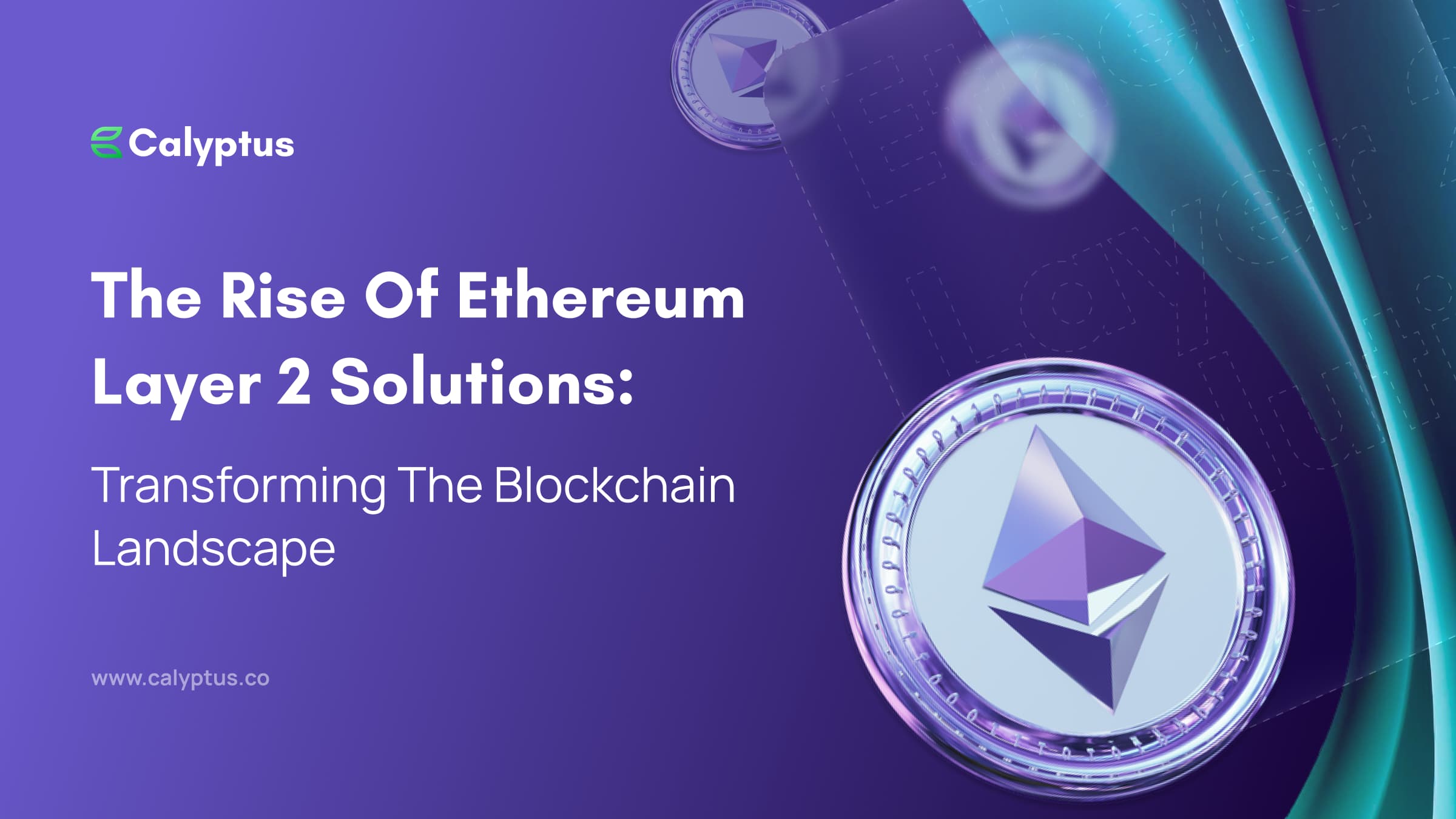The Rise of Ethereum Layer 2 Solutions
 Calyptus
Calyptus
Ethereum (also known as Layer1, don’t worry it will make sense later) has long been the go-to platform for decentralized applications (dApps) and smart contracts. With popularity comes a downside, high transaction fees and slow processing times, have plagued Ethereum, especially when demand surges. Enter Ethereum Layer 2 (L2) solutions, Layer 2’s are a game-changing technology that’s tackling these issues head-on, making Ethereum faster, cheaper, and more user-friendly. In this article we will explore the rapid growth of Ethereum L2s, the booming investment scene, job opportunities and what the future might hold with the least amount of technical jargon possible.
What Are Ethereum Layer 2 Solutions?
Imagine Ethereum as a bustling highway during rush hour. It’s packed, it’s slow, and the tolls (gas fees) are through the roof. Now, think of L2 solutions as express lanes that let you zip past the traffic at a fraction of the cost. These L2 solutions are secondary frameworks built on top of the Ethereum blockchain (Layer 1). They process transactions off-chain, meaning they don’t clog up the mainnet but still enjoy the security and decentralization that Ethereum is famous for.
There are two main types of L2 solutions:
- Rollups:
These bundle multiple transactions together like a bulk package before sending them to Ethereum. This clever approach reduces the amount of data Ethereum has to handle, making transactions faster and cheaper. Rollups come in two flavors:
Optimistic Rollups: These are like self-checkout lanes at a store — they assume all transactions are valid and only double-check if there’s a problem.
Zero-Knowledge Rollups (zk-Rollups): Imagine a super-efficient cashier who verifies every item in your cart at lightning speed before you leave the store. That’s zk-Rollups, using cryptographic proofs to verify transactions, ensuring they are valid before submitting them to Layer 1.
2. Sidechains:
Think of sidechains as branch offices of a company that operate independently but still report back to headquarters (Ethereum). They run their own show with different rules, which often means faster transactions and lower fees. Popular sidechains include Polygon and xDai.
Why Ethereum Layer 2 Solutions Matter
Ethereum L2 solutions aren’t just a quick fix for scalability issues — they represent a fundamental shift in how blockchain technology can be used. Here’s why they’re such a big deal:
Cost Efficiency: If you’ve ever cringed at paying $50 just to swap tokens, L2 solutions are your wallet’s new best friend. By slashing transaction fees, they make Ethereum accessible to a wider audience, encouraging more people to join the ecosystem.
Improved User Experience: Nobody likes waiting around for transactions to go through. L2s speed things up, making dApps smoother to use, which in turn boosts adoption and engagement.
Ecosystem Growth: L2 solutions have sparked a wave of new dApps and DeFi initiatives, driving innovation within the Ethereum ecosystem.
Environmental Impact: By easing the load on Ethereum’s mainnet, L2s help create a more sustainable blockchain environment, reducing the energy consumption tied to high gas fees.
The Funding Frenzy in Layer 2 Solutions
The buzz around Ethereum L2s has caught the eye of venture capitalists and crypto enthusiasts alike. Just in 2024, several L2 projects have raised eye-popping amounts of money:
Optimism: This project raised a whopping $150 million in a Series B funding round, with plans to expand its ecosystem and make the user experience even smoother.
Arbitrum: Not to be outdone, Arbitrum secured $120 million to supercharge its rollup technology and attract more dApps (decentralized applications).
Base: Backed by Coinbase, Base has seen its Total Value Locked (TVL) soar to $1.7 billion in just a few months. That’s a lot of confidence — and cash — pouring into the L2 space.
Altogether, the total value locked across all Ethereum L2s has skyrocketed to around $45 billion. This surge is largely driven by the growing adoption of decentralized finance (DeFi) applications, which thrive on the efficiency and cost savings L2s provide.
The Job Market Boom in the L2 Ecosystem
As Ethereum L2 solutions gain traction, so does the demand for skilled professionals. Job openings in this space have exploded, reflecting the need for blockchain expertise. Right now, there are over 334 job listings specifically related to Ethereum Layer 2 solutions, spanning a variety of roles such as:
Smart Contract Developers: The tech wizards who create and fine-tune smart contracts for L2 applications.
Protocol Engineers: These folks are the backbone, working on the underlying infrastructure that makes L2 solutions tick.
Product Managers: The masterminds behind the development and launch of new L2 products and services.
Marketing and Growth Specialists: The storytellers and strategists who spread the word and drive adoption of L2 solutions among users and developers.
For developers and professionals eager to dive into the blockchain world, the L2 ecosystem offers exciting opportunities, especially for those with a knack for Ethereum technologies. You can explore the latest L2 job listings on Calyptus jobs page. Whether you’re a seasoned expert or new to the industry, there’s a role waiting for you.
Challenges and What Lies Ahead
Of course, it’s not all smooth sailing. There are still some hurdles to clear. For one, making sure different L2 solutions can work seamlessly together is a big challenge, and then there’s the need to educate users about why L2s are worth their attention. Meanwhile, the Ethereum community is also working on Ethereum 2.0, a major upgrade that promises to further enhance scalability and sustainability.
Despite these challenges, the future of Ethereum L2 solutions looks bright. As more developers and users migrate to L2 platforms, the demand for efficient and cost-effective solutions will only grow. Ultimately, when Ethereum 2.0 arrives, L2s will play an even more crucial role in the blockchain landscape.
Wrapping It Up
Ethereum Layer 2 solutions are marking a pivotal moment for the blockchain industry. With massive funding, a thriving job market, and a focus on enhancing user experience, the L2 ecosystem is ripe with opportunities for developers, investors, and users alike. As Ethereum continues to evolve, L2s will be key to shaping the future of decentralized applications and the broader crypto landscape. The ongoing efforts within the Ethereum community to improve scalability and reduce costs show just how resilient and adaptable this technology is, ensuring Ethereum stays at the forefront of decentralized innovation.
Subscribe to my newsletter
Read articles from Calyptus directly inside your inbox. Subscribe to the newsletter, and don't miss out.
Written by
